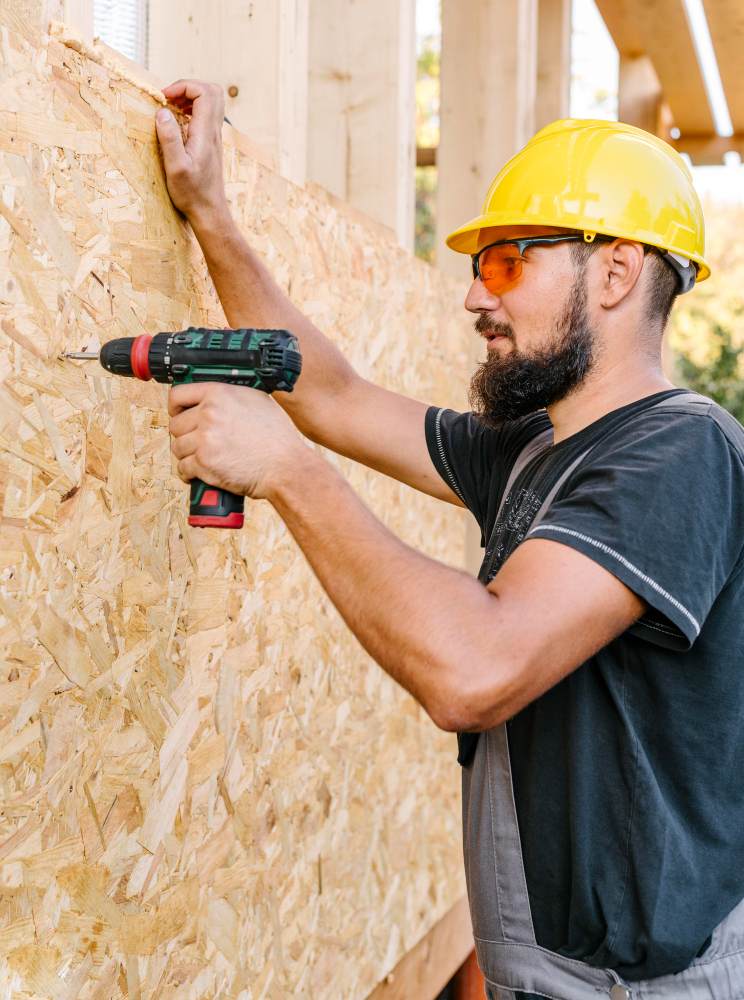Cavity Wall Insulation
Free cavity wall insulation grants cover the cost of making a property well-insulated. This grant funding is a part of the ECO (Energy Company Obligation) Scheme, intended to make homes energy efficient and is backed by the government in the UK. These grants aim to make the properties well-insulated that are built between 1924 and 1982 and have a cavity between two brick layers or between brick and block.
During CWI (cavity wall insulation), insulation is inserted in the cavity present between two layers of bricks. Different types of materials can be utilised to insulate the cavity wall based on the type of cavity, such as polystyrene beads or granules, polyurethane foam, glass fibre, and mineral wool. This insulation helps reduce heat loss from walls, enhances thermal efficiency, reduces heat transfer outside the wall, and decreases overall carbon emissions.
Green Home Grants UK is a registered company providing services to help clients get cavity wall insulation grants via its team of specialists. Our experienced professionals help them reduce their energy bills, eliminate the loss of 35% heat from the property, and save significant money. In this way, we also ensure compliance with Building Regulations that require installing insulation in the cavity walls of buildings built before 2005.
- Saves Money
- Fully Funded
- Warmer Home
- No Maintenance
- Low Initial Cost
- Reduced Energy Bills
- Increased Home Value
- Reduced Foundation Weight
The following are some of the essential requirements for cavity wall insulation:
- Your home’s height should be less than 12m.
- The external wall structures are made from unfilled brick walls with a minimum of a 2-inch cavity.
- The brickwork or masonry is in fine condition.
- Your property’s external walls are easily accessible.
- The internal wall structures are dry (if they are damp, the cause needs to be sorted first).
- There is no steel or timber frame construction work inside your property.
Your eligibility to receive cavity wall insulation grants is determined by these factors:
- Your Property Has an EPC Rating of D, E, F, or G.
- Annual Household Income Is £31,000 or less.
- It Is a Privately Owned Property or Rented from a Private Landlord.
- Wall Area to Be Insulated Must Be At Least 60% of your property’s size.
Moreover, you can also get these grants if you are getting any of the benefits below:
- Child Benefit
- Child Tax Credit
- Housing Benefit
- Income Support
- Universal Credit
- Working Tax Credit
- Pension Guarantee Credit
- Pension Credit Saving Credit
- Income-Based Jobseekers Allowance
- Income Related Employment Support Allowance
Combined annual household income limits apply.
You cannot apply for a wall insulation grant in the following scenarios:
- Your property was constructed before 1924 or after 2005.
- Your property’s walls are already insulated.
- You are living in a flat and the neighbours living above and below do not consent.
- There is dampness on the internal and external walls.
- The property is made from concrete, steel, stone, or timber.
- There is insufficient ventilation and there is no space to fit a vent.
We Are Here to Help | Green Home Grants UK
We provide fully certified and licenced services to our clients, providing expert advice and complete guidance to get the cavity wall insulation grant. Our experienced professionals help income-vulnerable households make their homes energy-efficient with cavity wall insulation installation.
Get in touch with us today for further details.

Frequently Asked Questions
Usually, it takes almost 2 to 3 hours to insulate a cavity wall in an average-sized property.
You can identify if your property’s cavity wall is insulated by inspecting the drilled holes under the windows to see if they are filled with cement. You can inspect the drilled holes where the mortar forms a T joint.
It is required to install insulation in the cavity starting from the ground floor to the roof. Therefore, you need to get the consent of your neighbours living above and below your property before you apply for this grant.
If you want to avail cavity wall insulation grant, inspect the walls to identify the cause of dampness and repair it before submitting your application.
Cavity wall insulation removal is required if the previous insulation is installed incorrectly, leading to moisture build-up. Therefore, new insulation will help eliminate the dampness and vermin infestation problems.
Generally, two bricks wide, a solid wall incorporates bricks that interlock to form a solid 9-inch wall. With no gaps between the bricks, the insulation shall be done either inside of the building or externally. From looking at the structure, you will see a solid wall alternating between header and stretcher bricks. On the other hand, the exposed brickwork of a cavity wall will show all the bricks with the same length. They are also much wider (typically 270mm) than solid brick walls.
Thus, in cavity walls, bricks are laid lengthways in an even staggered pattern. On the other hand, in solid walls, bricks are laid both lengthways and across the wall width.
sign up to newsletter
receice latest news, updates, and many other things every week.

